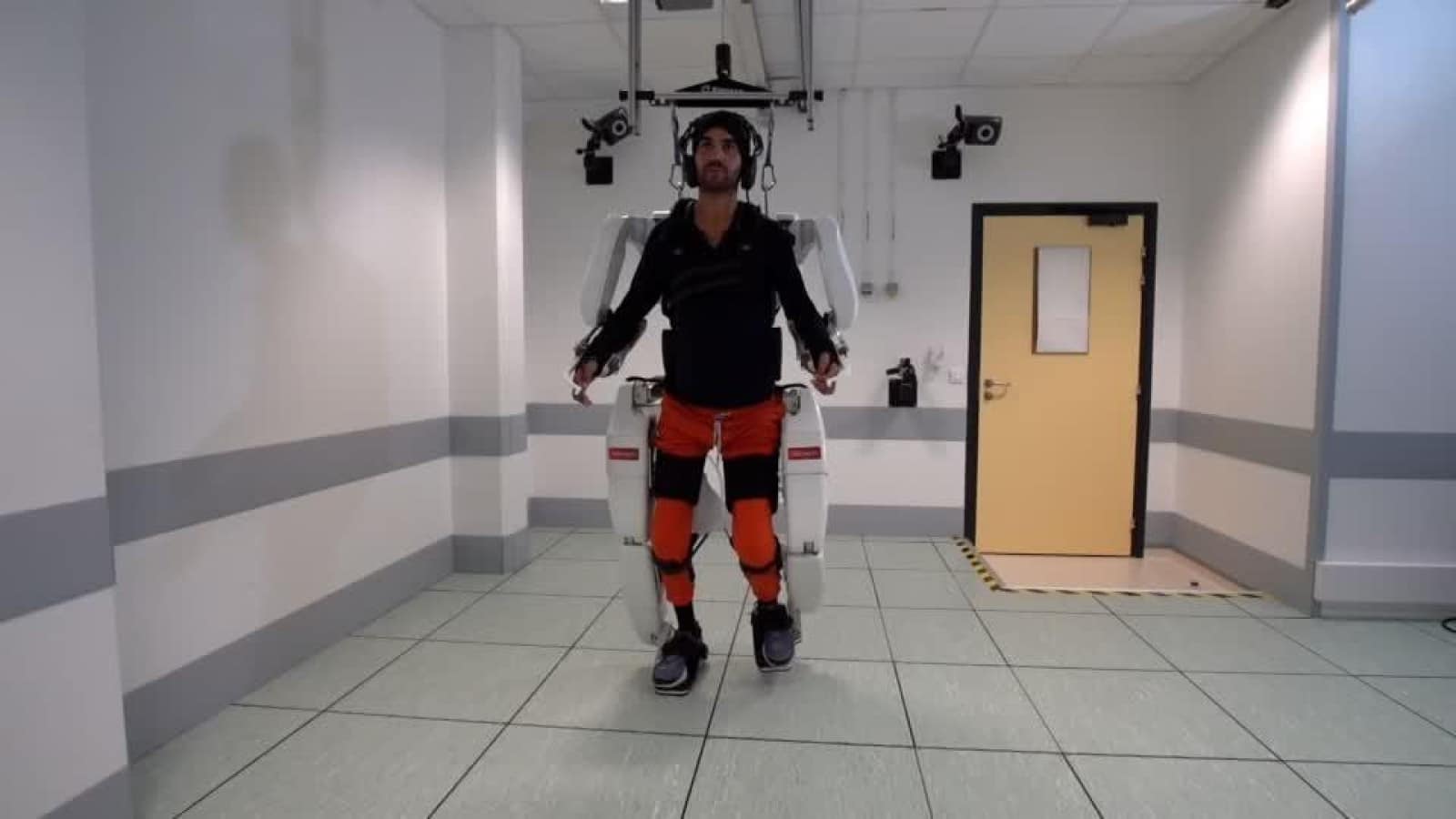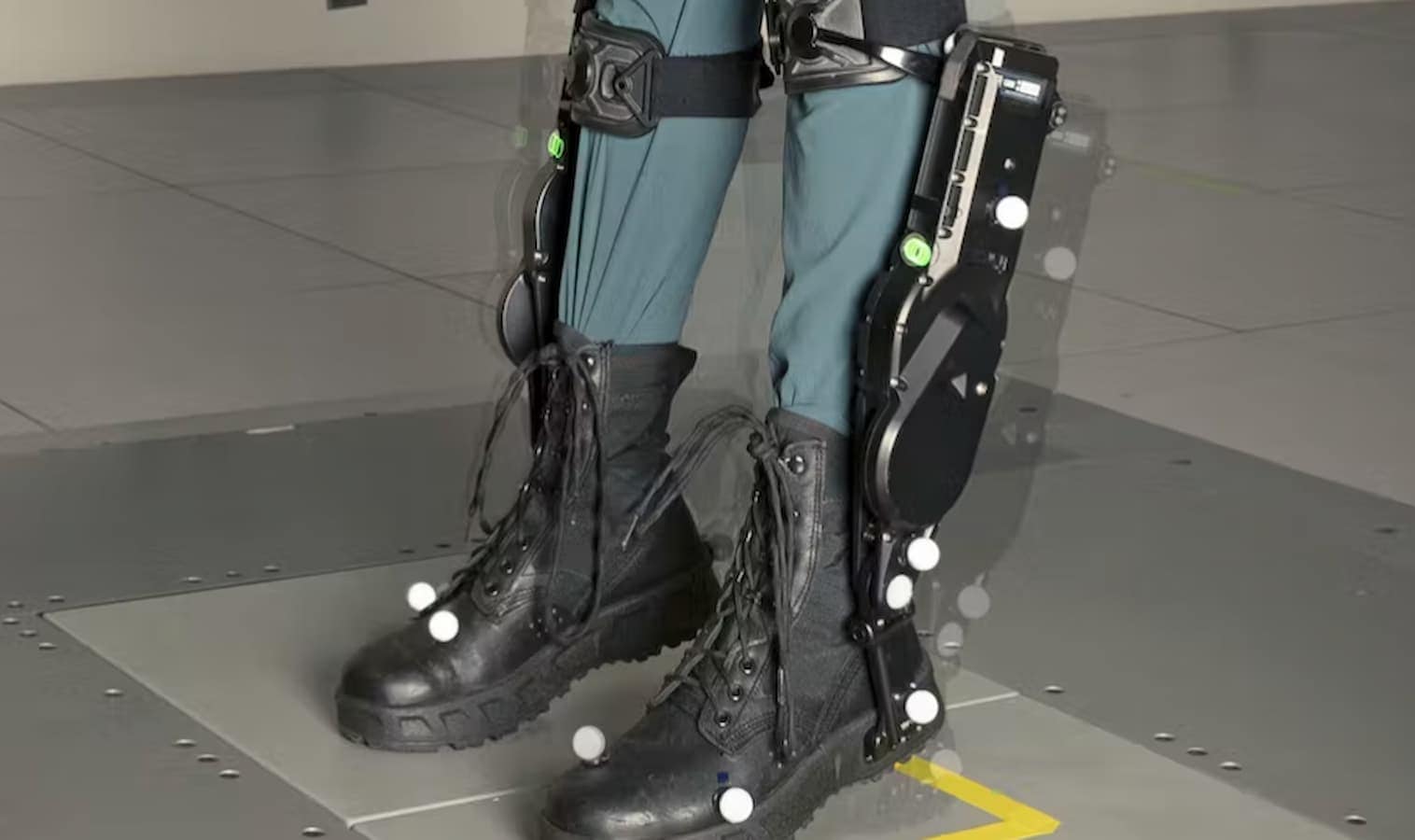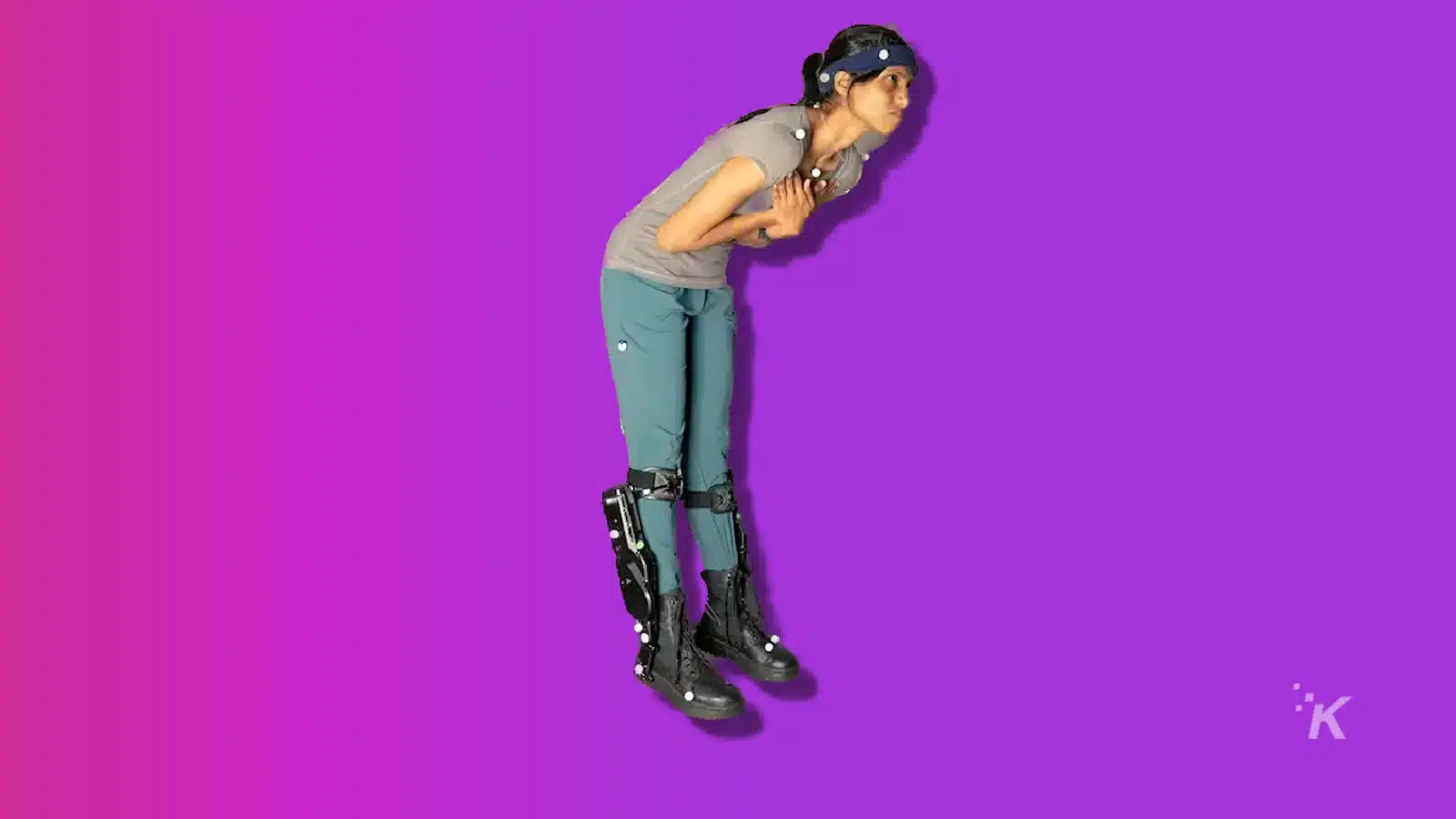News
Exoskeleton robo-boots will unleash unmatched stability for all
Faster-than-reflexes robo-boots boost balance.

Just a heads up, if you buy something through our links, we may get a small share of the sale. It’s one of the ways we keep the lights on here. Click here for more.
Editor’s Note: This article was written by Lena Ting, Gregory S. Sawicki, Max Shepherd, and Owen Beck. This article is republished from The Conversation under a Creative Commons license. Read the original article.
Robotic boots providing superhuman reflexes can help your balance. Our new study shows that the key to augmenting balance is to have boots that can act faster than human reaction times.
When people slip or trip, their reactions to regain balance are far slower than some machines can act.
For humans, and other animals with legs, it takes time for biological sensors to send signals to the nervous system and turn on muscles.
Robots can act much faster, using wires instead of nerves to send their signals.
But robots are still notoriously bad at balancing, because they can’t yet mimic how humans respond when their balance is challenged.
We are biomechanical engineers and rehabilitation physiology researchers studying movement’s neurophysiology.

In our study, we sought to answer whether wearable robots – like powered lower-limb exoskeletons or prostheses – can improve balance above and beyond a normal baseline.
We used a motorized floor to literally “pull the rug out” from under healthy young participants – pitching them forward toward the ground.
We asked them to stay balanced with their feet in place, but sometimes the slip was so large that they had to take a step to avoid face-planting on the ground.
Then, we programmed the exo-boots to give the participants a blast of assistance with either the same delay as their natural response or artificially faster than humanly possible. We compared that to giving no exo-boot assistance at all.

We were surprised to find that only the mode that beats the human reaction to the punch helped users recover balance faster and prevented them from taking a step to recover.
At the same time, we recorded the physiological responses of our exo-boot “test pilots” to see whether the device was mimicking – or potentially interfering with – their underlying balance responses.

Using ultrasound, we could look under the skin to see how calf muscles stretched during the slip. Muscle stretch generates critical sensory signals needed by the nervous system to initiate a balance reaction.
The faster-than-human exo-boot balance response actually eliminated calf muscle stretch signals, but the control signals to those same muscles, in response to the nervous system generally, persisted.
This finding highlights that the nervous system is more than a set of simple reflexes that react to local muscle stretch but instead acts to gather information from throughout the body to remain upright in both standing and walking.
Why it matters
People tend to take balance for granted. But every step holds the possibility of a fall, and bad falls are a top reason for health declines when people grow older.
If researchers can develop assistive technology to improve balance while getting from here to there, it can prevent falls and enable people to be active for longer.
What other related research is going on in the field
Using wearable robots to help mobility, particularly balance, has long been a dream of scientists and engineers.
But research to date has focused primarily on providing powered assistance to make it easier to walk faster or longer. Aside from a handful of promising laboratory-based research devices, the field of wearable robots has not focused much on balance.
Technology advances in the past decade open up new possibilities for state-of-the-art wearable robots to improve balance.
Other researchers worldwide are also adapting existing exoskeleton systems to assist balance using biologically inspired control algorithms that may, in time, be able to respond faster than a human’s reflex response.
What’s next
Our study is a proof-of-concept demonstration that exoskeletons can improve balance in a controlled laboratory setting during a simple upright standing task for young adults without balance problems.
There is much to be done to enable wearable robots to help with balance in everyday life and improve life for people with balance impairments, like older adults or people with stroke or spinal cord injury.
Future studies will be required to explore using exoskeletons at other lower-limb joints, like the knee and hip, to develop artificial intelligence that can anticipate the risk of falling and enable personalized superhuman balance.
Have any thoughts on this? Drop us a line below in the comments, or carry the discussion over to our Twitter or Facebook.
Editors’ Recommendations:
- ChatGPT is the future of chatting, only if you use it right
- Twitter users unlikely to leave platform in mass exodus
- Drone deliveries are becoming a reality – are we ready for it?
- Apps downloaded from different countries pose higher privacy risks
Editor’s Note: This article was written by Lena Ting, Gregory S. Sawicki, Max Shepherd, and Owen Beck. This article is republished from The Conversation under a Creative Commons license. Read the original article.































